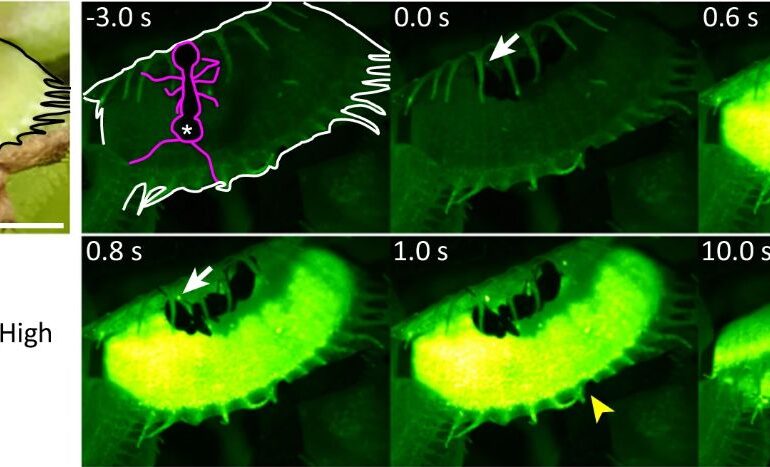Study Reveals Mechanism Behind Venus Flytrap’s Quick Response

Research has unveiled the mechanism that enables the Venus flytrap (Dionaea muscipula) to rapidly respond to stimuli, a feature critical to its survival as a carnivorous plant. A study led by Hiraku Suda and colleagues, published in Nature Communications on March 15, 2025, identifies a mechanosensor known as DmMSL10 as central to the plant’s touch sensitivity.
The Venus flytrap, famous for its spring-loaded traps, captures unsuspecting prey through a series of finely tuned movements. Previous studies acknowledged that the sensory hairs on its leaves respond to specific stimuli using calcium signals, yet the precise mechanisms remained largely unexplored. The recent findings shed light on this phenomenon by demonstrating the significance of the DmMSL10 ion channel.
Understanding the Mechanosensor
In the study, researchers created a variant of the Venus flytrap lacking the DmMSL10 channel, which is activated by mechanical stimuli. Both the wild-type and knockout variants of this plant were subjected to tests that measured their response to touch. The results revealed that while both types triggered calcium ion release, the rate of action potential generation was significantly lower in the knockout variant. This indicates that DmMSL10 is crucial for detecting minor stimuli, which aids in prey capture.
Further experiments reinforced these findings. When ants were allowed to roam on the leaves of both the wild-type and knockout plants, the wild-type successfully ensnared the first ant that wandered onto its surface. In contrast, the knockout variant failed to respond, demonstrating its inability to propagate the necessary calcium signals to close the trap.
Implications for Future Research
This groundbreaking research not only clarifies how D. muscipula processes environmental signals but also opens up avenues for further investigation into the evolution of similar mechanisms in other organisms. The parallels between plant and animal sensory systems could provide insights into evolutionary biology and the adaptation strategies of carnivorous plants.
As researchers continue to explore the intricate world of plant biology, the findings related to DmMSL10 may illuminate how other species, such as the waterwheel plant (Aldrovanda vesiculosa), manage rapid responses to their surroundings. This study marks a significant step in understanding the complex interactions between plants and their environments, highlighting the remarkable adaptations that allow these organisms to thrive.
With ongoing research, scientists anticipate uncovering more about the evolutionary development of sensory mechanisms in the plant kingdom, potentially revealing how plants like the Venus flytrap have adapted over time to capture their prey efficiently.






